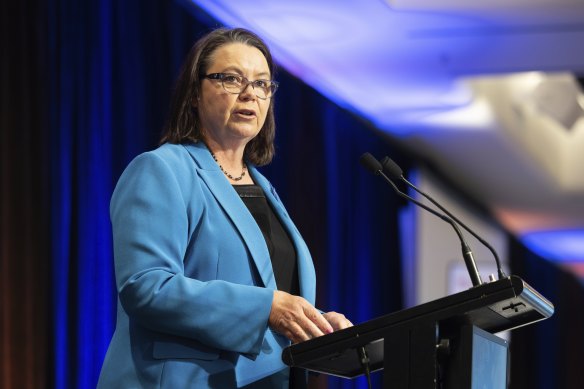This was published 8 months ago
Australia’s fossil fuel giants are facing a $30 billion hit
By Nick Toscano
Australia’s coal and natural gas shippers are bracing for a significant hit to their revenue in the next two years as sliding fossil fuel prices threaten to wipe out nearly $30 billion of export earnings.
Coal and liquefied natural gas, two of the nation’s biggest commodities, were the key drivers of record export revenue from the mining and energy sectors in 2022 and 2023 as the end of COVID-19 shutdowns reignited energy demand and the war in Ukraine choked global supplies.

Thermal coal prices surged to record highs following Russia’s invasion of Ukraine in 2022.Credit: Glenn Hunt
However, the decline in earnings now expected from the two fossil fuels by 2025-26 could be severe, the federal government says in its latest quarterly export forecasts, released on Monday.
Cargoes of LNG, which is gas that has been super-chilled down to a liquid so it can be transported on giant ships, are on track to fall from $69 billion to $60 billion by 2025-26 as commodity prices remain under pressure. The forecasts say the global LNG market risks flipping into oversupply from 2025 once vast new sources from elsewhere in the world come online.
“A massive wave of investment in gas projects is progressing in the United States and Qatar,” the Department of Industry, Science and Resources said. “Output from new projects in the two nations should begin to outpace demand growth from late 2025.”
Coal exports are also set to come under pressure. Earnings from thermal coal – the type burned in power stations – are tipped to fall by 22 per cent from $37 billion to $29 billion by 2025-26. Demand for thermal coal is set to shrink over the next two years as China and Europe target increasingly ambitious plans to curb their emissions by burning less coal and switching to cleaner sources of electricity generation.
Metallurgical coal, used in steel-making furnaces to produce molten pig iron, could also fall 22 per cent, to $42 billion, over that period, the report said.
Combined, the earnings declines from Australian coal and LNG could amount to $29 billion, as prices continue retreating from the unseen highs of 2022-23, when the war in Ukraine caused a scramble for fuels to keep the lights on in parts of Europe and Asia, sending prices skyrocketing.
Placing even greater pressure on government coffers, the forecasts published on Monday also point to the risk of a sharp contraction in earnings from Australia’s most valuable export, the steel-making material iron ore.
With iron ore prices trading around two-year lows as China’s slowing property market dampens demand, Australia’s iron ore earnings are tipped to fall by about $30 billion this year – from $138 billion to $107 billion, before easing to $99 billion in 2025-26.

Resources Minister Madeleine King stressed the importance of the resources and energy sector to the nation’s economic prosperity.Credit: Alex Ellinghausen
Federal Resources Minister Madeleine King on Monday said export earnings from Australia’s resource and energy sector were continuing to normalise due to slower global growth, lower commodity prices and a stronger Australian dollar.
However, King said Monday’s forecasts also underlined the ongoing importance of the commodities to the nation’s economic prosperity.
“The resources and energy sector continues to underpin Australia’s economy and support more than a quarter of a million direct jobs,” she said.
Along with fossil fuels and iron ore, Australia also has significant known reserves of some of the metals the world will need in vastly greater quantities in the accelerating push to tackle climate change, such as lithium, a key ingredient in the batteries that will power electric cars and store renewable energy.
Automakers across the globe have been scrambling to lock in supplies of lithium recently, striking long-term contracts with producers in Western Australia and the Northern Territory.
However, prices for the commodity have fallen sharply amid a slowdown in electric vehicle sales. Analysts have attributed this to softer consumer demand in China and a combination of policy changes and higher interest rates elsewhere, which raise the cost of electric cars compared with internal combustion engine vehicles.
The government forecasts suggest earnings from Australian exports of hard-rock lithium will fall from $9.9 billion to $6.3 billion this year, before rising to $8.2 billion in 2025-26.
King on Monday said the Albanese government was “stepping up to lead on critical minerals” to the benefit of Australia and the world.
“Lower prices for critical minerals underline the need for government support for our critical minerals sector through policies such as the production tax incentive,” she said.
The Business Briefing newsletter delivers major stories, exclusive coverage and expert opinion. Sign up to get it every weekday morning.